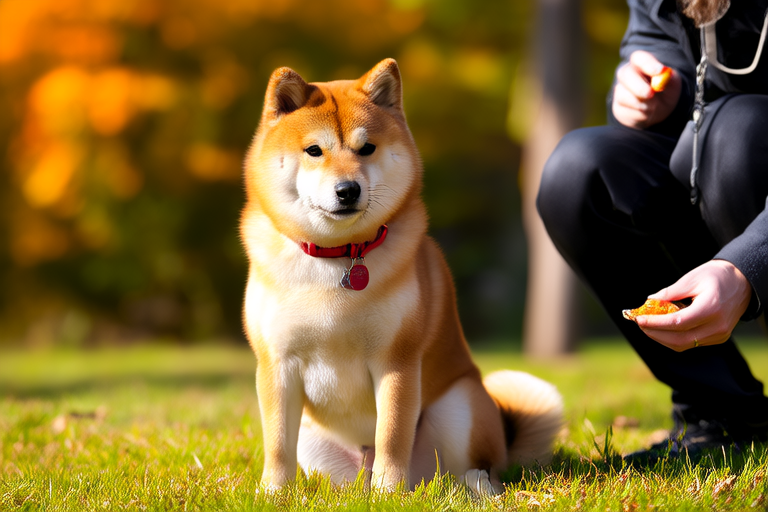Training Tips for Every Shiba Inu Owner Who Wants a Well-Behaved Pup
Welcome to the world of Shiba Inus! Known for their intelligence, independence, and loyalty, these small but sturdy dogs can make wonderful companions. However, their strong-willed nature means they require patient, consistent, and thoughtful training. This article will guide you through essential training methods tailored specifically for Shiba Inus, helping you raise a well-behaved pup.
The Unique Nature of Shiba Inus
Shiba Inus are an ancient breed originating from Japan, known for their fox-like appearance and spirited personality. They are intelligent, independent, and can be quite stubborn. Understanding these traits is crucial for effective training. Their intelligence means they learn quickly, but their independence can lead to resistance if training isn’t approached correctly.
Positive Reinforcement Techniques
Positive reinforcement is key when training your Shiba Inu. Rewarding desired behaviors with treats, praise, or playtime encourages your dog to repeat those actions. For example, when your Shiba Inu sits on command, immediately reward them with a treat and enthusiastic praise. Over time, this creates a positive association between the behavior and the reward.
Consistency is vital. Use the same command word and body language each time you ask your dog to perform a task. This helps them understand what is expected of them. Be patient; some Shibas may take longer to grasp commands due to their independent nature.
Early Socialization
Introducing your Shiba Inu to various environments, people, and other animals from an early age is crucial. Socialization helps prevent behavioral issues later in life. Start by taking your puppy on short walks around the neighborhood, allowing them to meet different people and experience various stimuli.
Real-life example: A friend’s Shiba Inu, named Kuma, was introduced to children during playdates at a young age. As a result, Kuma grew up being comfortable and friendly around kids, unlike many Shibas who can be wary of unfamiliar people.
Basic Commands
Teaching basic commands such as sit, stay, come, and down is fundamental. Begin with simple commands and gradually increase complexity. Here’s how:
- Sit: Hold a treat above your Shiba Inu’s head and move it slightly backward. As their nose follows the treat, their bottom will naturally lower into a sitting position. Once they sit, give them the treat and praise.
- Stay: Start with a short duration, such as one second, and gradually increase as your dog masters the command. Use a verbal cue like “stay” and extend your hand palm forward to signal the stay.
- Come: Call your Shiba Inu’s name followed by “come.” When they approach, reward them with a treat and affection. Practice this command in different locations to ensure reliability.
- Down: Encourage your Shiba Inu to lie down by holding a treat close to their nose and slowly lowering it towards the ground. As they follow the treat, their body will lower into a lying position. Reward them once they’re down.
Housebreaking Strategies
Housebreaking requires patience and consistency. Establish a routine that includes frequent trips outside, especially after meals, naps, and playtimes. Use a specific phrase like “go potty” when taking your Shiba Inu out to create an association with the desired behavior.
If an accident occurs inside, calmly clean the area without scolding your dog. Scolding can create fear and make the situation worse. Instead, focus on praising your Shiba Inu for going outside.
Managing Stubborn Tendencies
Shibas can be stubborn, making training challenging. To manage this, keep training sessions short (5-10 minutes) and fun. Use high-value treats and plenty of praise to maintain your dog’s interest. Break down tasks into smaller steps and celebrate every success.
Real-life example: My neighbor’s Shiba Inu, Hana, would only respond to her owner’s commands if given her favorite treat, salmon. By incorporating salmon into training sessions, Hana became more engaged and responsive.
Puppy Proofing Your Home
Before bringing your Shiba Inu home, puppy-proof your environment. Remove items that could be chewed or knocked over. Provide appropriate toys and chews to redirect natural chewing instincts. Crate training can also help manage destructive behavior and provide a safe space for your puppy.
Patience and Consistency
Patience and consistency are paramount in training any dog, especially a Shiba Inu. Training is a process that takes time and effort. Avoid getting frustrated if progress seems slow. Celebrate small victories and remember that each dog learns at their own pace.
Real-life example: Another friend, Sarah, had a Shiba Inu named Akira who took longer than expected to learn basic commands. Instead of giving up, Sarah continued practicing daily and eventually saw significant improvement. Patience paid off, and now Akira is well-trained and obedient.
Maintaining Training Through Play
Incorporate play into your training routine to keep things enjoyable and engaging. Interactive games like fetch or hide-and-seek can reinforce obedience while providing mental stimulation. Playing tug-of-war can also help teach bite inhibition, teaching your Shiba Inu to control their bite strength.
Advanced Training
Once your Shiba Inu has mastered basic commands, consider advanced training. Agility courses, trick training, or even therapy work can challenge your dog mentally and physically. These activities provide opportunities for bonding and further develop your Shiba Inu’s skills.
Seek Professional Help If Needed
If you encounter persistent behavioral issues, don’t hesitate to seek professional help. A certified dog trainer or behaviorist can provide personalized guidance and support. They can also help address specific problems like aggression, excessive barking, or separation anxiety.
Conclusion
Raising a well-behaved Shiba Inu requires understanding their unique characteristics and employing appropriate training methods. Positive reinforcement, early socialization, basic commands, housebreaking strategies, and managing stubbornness are all essential components. With patience, consistency, and love, you can train your Shiba Inu to be a delightful companion.
Remember, every dog is different, so adapt your training approach based on your individual pet’s needs. Enjoy the journey of building a strong bond with your Shiba Inu, and cherish the moments together. Happy training!
